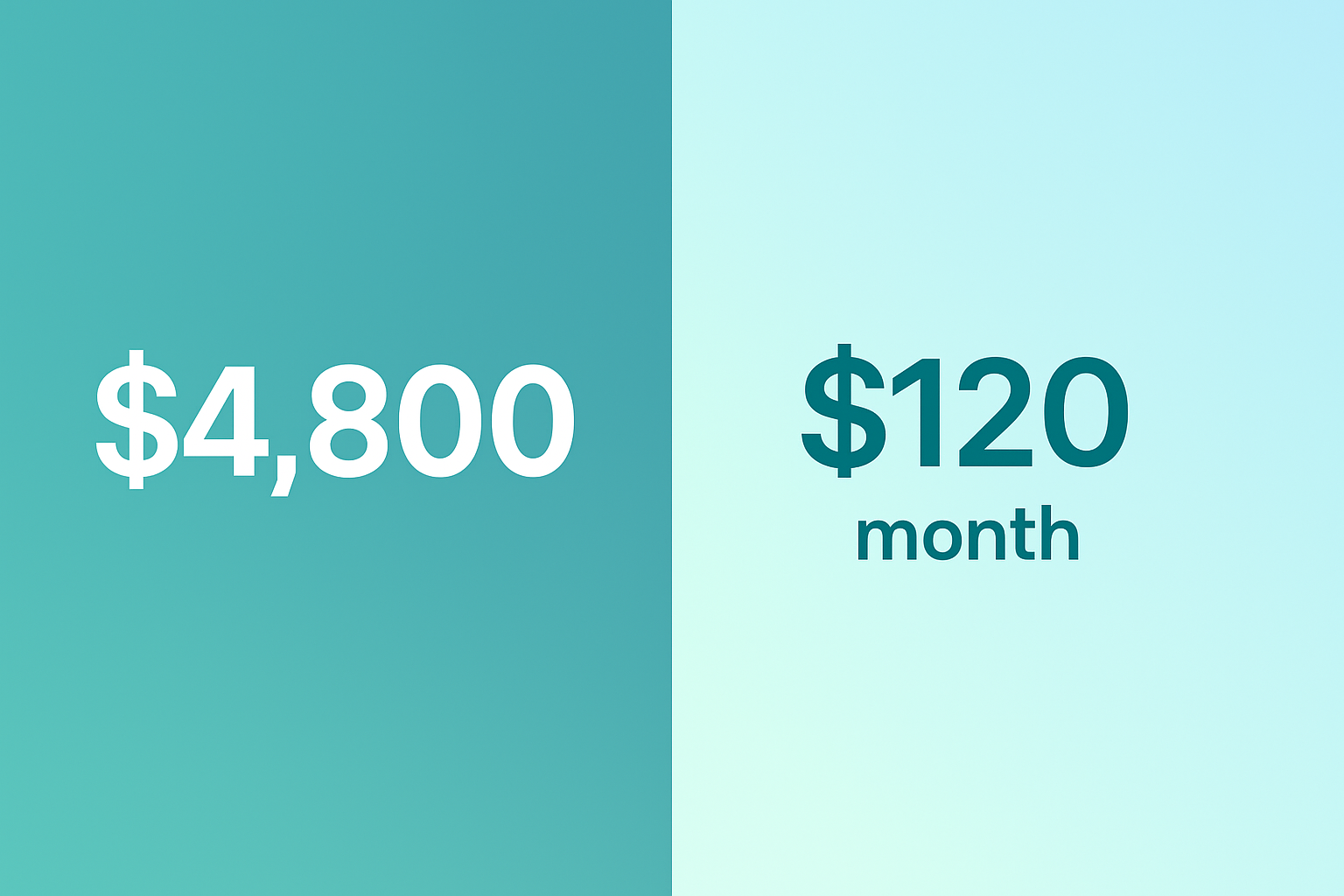The Real Reason Patients Decline Treatment (And How Financing Fixes It)
Clinics often assume patients decline treatment because:
- They don’t see the value
- They want a second opinion
- They’re not ready
- They don’t fully understand the procedure
But in most cases, the real reason is much simpler — and far more common.
Patients decline treatment because the full amount is due today, and that single moment of financial friction shuts down the entire conversation.
They want the outcome.
They trust the provider.
They agree with the diagnosis.
They just can’t (or don’t want to) absorb a large, unexpected cost all at once.
This article breaks down why that happens and how offering monthly payments removes the pressure that stops patients from saying yes.
It’s not clinical hesitation — it’s financial friction
Across thousands of clinics, the same patterns repeat:
1. Patients experience sticker shock
Even when they expect care to cost money, the final number feels larger than anticipated.
2. They feel embarrassed or uncomfortable discussing finances
Money is emotional. Patients rarely want to admit:
- “I can’t afford that right now.”
- “That’s more than I expected.”
Instead, they say:
“Let me think about it.”
3. The upfront payment creates a forced yes/no moment
It becomes:
- “Pay $4,200 today”
vs. - “Decline and walk away”
There’s no middle ground.
4. They fear committing to a big financial decision too quickly
Especially in cosmetic and elective treatments, patients need time to process — but the moment is too compressed.
5. They don’t want to feel pressured
If the conversation feels rushed or overwhelming, the patient exits emotionally.
These are not objections to treatment — they’re responses to payment structure.
Why “I’ll think about it” rarely means “I don’t want it”
Patients use “I’ll think about it” as a soft exit from discomfort.
What they usually mean is:
- “This is a lot at once.”
- “I’m not prepared to spend this today.”
- “I want this, but not with this payment pressure.”
Clinically, they’re aligned.
Financially, they hesitate.
This gap is where most case acceptance is lost.
Monthly payments fix the actual problem
Offering a way to split the cost into smaller installments changes the entire emotional experience.
1. It removes the pressure of a large one-time payment
Suddenly the decision feels achievable:
“$130/month feels doable.”
2. It reframes the treatment from a financial event to a manageable plan
Instead of:
“$5,000 right now,”
patients see:
“Around $150/month.”
The decision shifts from bank balance to monthly comfort.
3. It lets patients say yes based on desire and need — not immediate cash availability
Patients rarely decline because they don’t want the treatment.
They decline because they don’t want the full financial hit today.
Monthly payments solve exactly that.
4. It creates a private, low-pressure environment
Especially with QR codes or mobile-first flows.
Patients feel more in control when they can:
- Review options privately
- Check eligibility without pressure
- Move at their own pace
5. It restores momentum inside the clinic
Instant prequalification leads to instant decisions — while the treatment plan is still fresh and motivating.
The psychology behind why financing works
Monthly payments work not because patients “can’t afford treatment,” but because:
Humans prefer smaller, predictable costs
Subscription models have taught consumers to think in monthly terms, not large lump sums.
People anchor to the first number they hear
If they hear $4,800 first, everything after feels “expensive.”
If they hear $120/month first, the lump sum feels less intimidating.
“Payment now vs. benefit later” feels risky
Monthly payments align the cost with the timeline of results.
Patients want to avoid financial regret
A large, immediate purchase triggers loss aversion.
Smaller monthly payments minimize perceived risk.
How clinics can introduce financing without pressure
Here’s a simple script that reduces patient discomfort:
“The full treatment plan is $3,900.
Most patients either pay upfront or choose monthly payments starting around $110–$130.
If you’d like, we can check your options — it’s a soft credit check, so it won’t impact your score.”
This script:
- Normalizes monthly payments
- Removes pressure
- Reduces embarrassment
- Increases comfort
- Boosts acceptance
What this means for your clinic
When financial friction is reduced:
- Case acceptance increases
- Patients choose complete treatment plans
- Cosmetic packages convert more often
- Upgrades and add-ons become easier to approve
- The checkout process feels calmer and more human
You’re not lowering your prices — you’re lowering the barrier to saying yes.
How Luma fits into this picture
Luma is built to eliminate the exact friction points that cause patients to decline treatment:
- Soft credit checks for the initial application
- Instant monthly payment options
- QR-code or SMS-friendly application flow
- A private, patient-led experience
- A workflow that reduces staff pressure
- A clean, modern approval process
Our goal is simple:
Help patients say yes to the care they want — and help clinics deliver the results they’re proud of.
